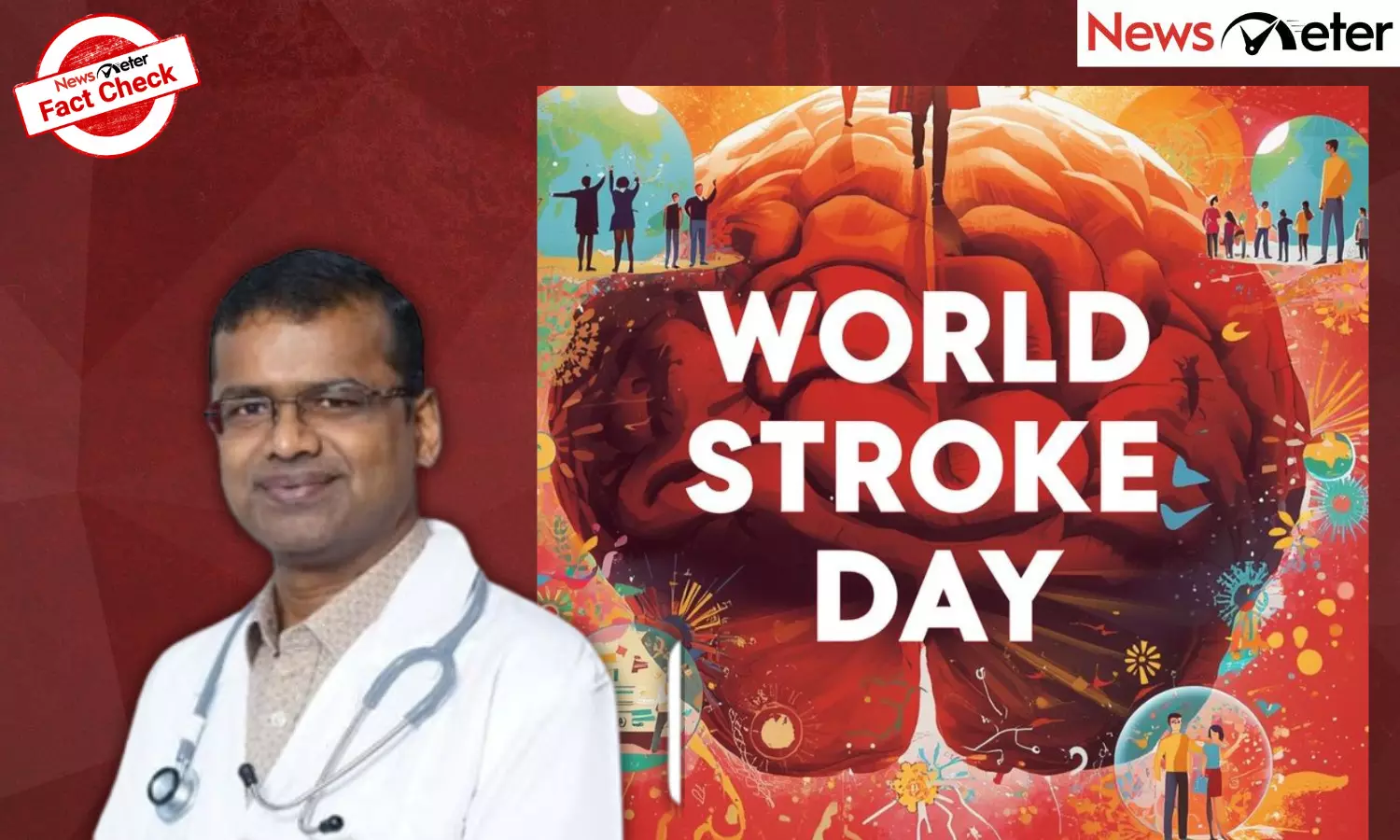World Stroke Day: Five myths that can cost lives - Doctor explains how to spot a stroke fast
Dr Sudhir Kumar has addressed widespread and potentially dangerous misconceptions about stroke.
By - Dr Sudhir Kumar |
Hyderabad: On World Stroke Day, observed annually on October 29, Dr Sudhir Kumar, Senior Consultant Neurologist at Apollo Hospitals, Jubilee Hills, has addressed widespread and potentially dangerous misconceptions about stroke that could be putting lives at risk across all age groups and demographics.
Myth 1: Only elderly people get strokes/Only men are at high risk
Fact: Stroke is not age- or gender-specific and can affect anyone, regardless of their demographic profile. While stroke incidence does increase with age, younger individuals are increasingly vulnerable.
The critical determining factors are the presence of risk factors such as hypertension, diabetes, smoking and abnormal lipid profiles.
When these risk factors are present, stroke can occur at any age and affect any gender equally. Women face particular vulnerability during certain life stages, including pregnancy and while using hormonal contraceptives, which can further elevate stroke risk.
Myth 2: Stroke cannot be prevented
Fact: This is categorically false. Medical evidence demonstrates that approximately 80 per cent of strokes are preventable through proactive lifestyle modifications and proper management of underlying health conditions.
Prevention strategies include adopting a healthy lifestyle, maintaining regular physical activity, following a balanced diet and rigorously controlling modifiable risk factors such as diabetes, high blood pressure and abnormal cholesterol levels.
Additionally, avoiding tobacco use and excessive alcohol consumption significantly reduces stroke risk, making prevention a realistic and achievable goal for the majority of people.
Myth 3: Stroke symptoms are hard to recognise
Fact: Stroke symptoms are actually straightforward to identify using the widely recognised FAST acronym:
F (Face): Sudden asymmetry or abnormal drooping of one side of the face
A (Arm): Weakness in one arm, which begins to droop when both arms are raised
S (Speech): Difficulty speaking clearly, slurred speech or inability to understand others
T (Time): Time is critical—immediately call emergency services and rush to the nearest stroke-ready hospital
Recognising these clear warning signs enables rapid identification of stroke and facilitates immediate medical intervention, which is crucial since every minute counts in stroke treatment.
Other symptoms may include sudden severe headache, vision problems, dizziness or loss of balance.
Myth 4: Taking aspirin at home helps during a stroke
Fact: This is a dangerous misconception that could prove fatal. Stroke presents in two distinct types: ischemic (caused by a blood clot blocking blood flow) and hemorrhagic (caused by bleeding in the brain).
Aspirin works by thinning the blood, which is beneficial for ischemic strokes but potentially catastrophic for hemorrhagic strokes, as it would exacerbate bleeding.
A CT scan must always be performed first to definitively determine the stroke type before any medication is administered. Only after confirming an ischemic stroke should aspirin or other blood-thinning medications be used.
Self-medication with aspirin during a stroke without proper diagnosis could worsen the condition significantly.
Myth 5: Strokes don’t run in families
Fact: Family history plays a meaningful role in stroke risk. A subset of strokes, particularly those affecting younger individuals, can be directly attributed to genetic risk factors and hereditary conditions affecting blood vessels or clotting mechanisms.
Beyond direct genetic factors, families often share lifestyle patterns, dietary habits, and environmental factors that contribute to stroke risk. Conditions such as diabetes, obesity, and hypertension frequently cluster in families due to these shared behaviours and eating patterns, creating a familial predisposition to stroke.
Individuals with a family history of stroke should be particularly vigilant about risk factor management and regular health screenings.
Follow Dr Sudhir Kumar on social media: X account (@hyderabaddoctor) and Instagram (@docsudhir)